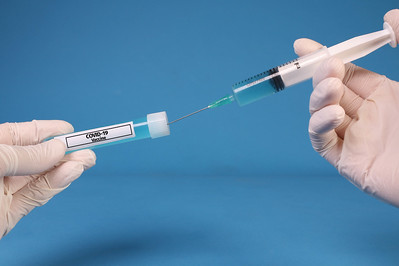Preparing for the Next Pandemic
Covid 19 is an infectious disease that has brought the world to almost a complete halt. It comes as a shock to most, and not many know how to properly handle and irradicate it. The scientific name for this disease is SARS-CoV-2, and it is also known as the Coronavirus. The virus emerged in November of 2019 in the Wuhan province in China and has since then spread around the world. The World Health Organization officially declared Covid 19 as a pandemic in March of 2020 (WHO 2020).
In terms of influenza, we will more specifically be reviewing the pandemic of influenza in 1918, a little over 100 years prior to the Covid 19 pandemic. Although commonly referred to as the Spanish flu, that is not in fact where it originated. Some believe that the influenza initially originated from China, and was then spread throughout the world by laborers supporting war efforts (Coombs 2020). The reason that Spain gained all of the world’s attention was that Spain’s media was uncensored because of their state of neutrality during the war; therefore, it relayed the most information and received the most attention, leading people to believe that its origin was there (Little 2020).
The precautions taken during the 1918 pandemic of influenza have aided in preparing us to handle today’s current situation in regard to Covid 19. In 2007 a document was developed using the responses of the past influenza pandemic as reference to demonstrate how it is “critical to intervene early” (Fauci 2007). The rapid response plans were crucial in the influenza pandemic and continue to prove crucial as they were developed to help in future similar situations.
Non-pharmaceutical Approaches

There are many similarities between these two pandemics, one being the spread and transmission. Both of these outbreaks were made possible due to the existence of large gatherings where person to person transmission is likely (NIH 2007). To combat this, precautions were taken. Restrictions were imposed to limit and contain the spread of these viruses. With this meant that public places were instructed to close, including theaters, churches, and schools. In 1918, large gatherings were limited to no more than 20 people, while today, our guidelines are being updated with every new discovery or spikes involved with Covid 19.
Along with the shutdowns for both pandemics, it was advised that mask mandates be instated. While there is an obvious difference between the masks being worn today, and the masks being worn in the 1900’s, the underlying purpose remains the same, to limit the transmission of the viruses. According to the CDC, “respiratory droplets travel into the air when you cough, sneeze, talk, shout, or sing” (CDC 2020). While this idea was still recognized in 1918, mask ordinances faced much resistance. Though the masks were not entirely beneficial in the time of the Spanish Flu, they are just another example of a non pharmaceutical approach that is still being used today (Ewing 2020).
Vaccination

An easy prevention method for any pandemic would be to simply vaccinate beforehand, but realistically, that is not plausible. There is no telling when a pandemic might occur, or what strand it will be, or if a vaccine for it would even exist. With the situation of the influenza, the virus quickly mutates, making it difficult to develop a functioning vaccine. Ideally, people would be vaccinated on a large scale before exposure occurs, (NIH 2007), but after evaluating the mutation process of influenza this would be a very difficult task to accomplish. In terms of Covid 19, no vaccine has yet been developed for any strand of the virus, being that it is so new. A vaccine has been in the works since almost the start of the pandemic and has still been yet to be released. This has been occurring under “Operation Warp Speed” set by the United States Federal Government (CDC 2020).
Overall, Covid and Influenza relay many similarities including their status of respiratory diseases and health precautions taken in efforts to contain the spread. Many of these precautions were developed in 2007 to help better plan for future pandemics, such as the one we are in today. These regulations were based on the actions taken during the Spanish Influenza of 1918 and are continuing to prove beneficial. These can range from the limitations of large social gatherings to even just wearing a mask. Although in this day and age, science is stronger than it ever has been before, nothing can be accomplished without research, not even a vaccine to end a pandemic. Over the 100 years in between the pandemics of Spanish Influenza and Covid 19, the practices have remained the same.
References
Coombs, H. (2020). COVID-19: NATO in the Age of Pandemics (pp. 61-70, Rep.) (Tardy T., Ed.). NATO Defense College. doi:10.2307/resrep25148.13
Coronavirus Disease (COVID-19) – events as they happen. (n.d.). Retrieved December 03, 2020, from https://www.who.int/emergencies/diseases/novel-coronavirus-2019/events-as-they-happen
COVID-19: Considerations for Wearing Masks. (n.d.). Retrieved December 03, 2020, from https://www.cdc.gov/coronavirus/2019-ncov/prevent-getting-sick/cloth-face-cover-guidance.html
Ewing, E. (2020, May 12). Flu Masks Failed In 1918, But We Need Them Now: Health Affairs Blog. Retrieved December 03, 2020, from https://www.healthaffairs.org/do/10.1377/hblog20200508.769108/full/
Frequently Asked Questions about COVID-19 Vaccination. (n.d.). Retrieved December 03, 2020, from https://www.cdc.gov/coronavirus/2019-ncov/vaccines/faq.html
Little, B. (2020, May 26). As the 1918 Flu Emerged, Cover-Up and Denial Helped It Spread. Retrieved December 03, 2020, from https://www.history.com/news/1918-pandemic-spanish-flu-censorship
Rapid Response was Crucial to Containing the 1918 Flu Pandemic. (2015, September 28). Retrieved December 03, 2020, from https://www.nih.gov/news-events/news-releases/rapid-response-was-crucial-containing-1918-flu-pandemic
